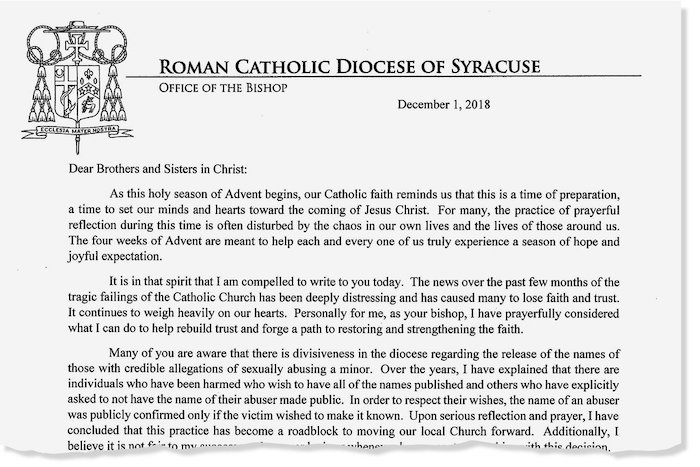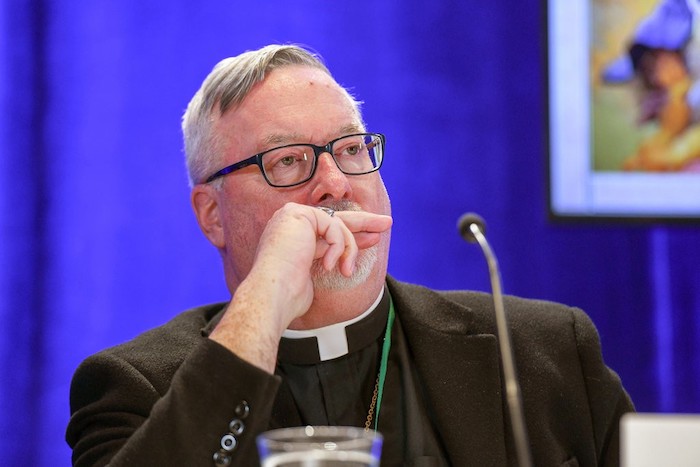Parents horrified after priest used teen’s funeral to condemn suicide

When Maison Hullibarger died by suicide on Dec. 4, his parents — devout Catholics — began planning a funeral that would celebrate their 18-year-old son’s life.
He was a brother to five siblings, an athlete and teammate, a strong criminal justice student at the University of Toledo, and a passionate fan of the Pittsburgh Steelers. And because the priest at their Temperance, Mich., parish didn’t personally know their son, Jeffrey and Linda Hullibarger met with him before the funeral to discuss what they wanted in the homily.

The Hullibargers were detailed, they said, and Father Don LaCuesta took notes.
“We wanted him to celebrate how Maison lived,” Linda Hullibarger told the Detroit Free Press, “not how he died.”
Instead, during the funeral at Our Lady of Mount Carmel Catholic Church, the Hullibargers listened from the pews as the priest spoke the word “suicide” six times. He told mourners, local media reported, that Maison may be denied admittance to heaven because of the way he died. LaCuesta wondered aloud, the Hullibargers said, if Maison had repented enough in the eyes of God.
“He basically called our son a sinner,” Linda told the Toledo Blade.
“We looked at each other and said, ‘What is he doing?” Jeffrey said in an interview with the newspaper. “We didn’t ask for this.”
Eventually, Jeffrey decided to intervene and walked to the pulpit.
“Father,” he whispered, “Please stop.”
But LaCuesta kept going, the Hullibargers recounted in local news reports. When the service finally ended, they told the priest he was no longer welcome at Maison’s gravesite burial — where the teen’s family and friends decided to say everything LaCuesta hadn’t.
Now, the Hullibargers are calling for the priest’s removal, and generating enough discussion to warrant an apology from the Archdiocese of Detroit. In a statement to The Washington Post, archdiocese spokeswoman Holly Fournier said “an unbearable situation was made even more difficult, and we are sorry.”
LaCuesta will not be preaching at funerals “for the foreseeable future,” Fournier said, and he will have his other homilies reviewed by a priest mentor.
“We share the family’s grief at such a profound loss,” the archdiocese statement said. “Our hope is always to bring comfort into situations of great pain, through funeral services centered on the love and healing power of Christ. Unfortunately, that did not happen in this case.”
After “reflection,” according to the statement, the priest agreed that “the family was not served as they should have been served.”
Fournier said there are no current plans to remove or reassign LaCuesta from Our Lady of Mount Carmel, as the Hullibargers have requested. The statement did say that the priest was “willing to accept the assistance he needs in order to become a more effective minister in these difficult situations.”
“Father LaCuesta will be getting help from professionals to probe how and why he failed to effectively address the grief of the family in crisis,” Fournier said. “This will occur both on a human level (counseling) and a spiritual level (spiritual direction).”
For centuries, the Catholic Church has struggled with the religious implications, and societal stigma, of suicide. It wasn’t until the 1960s that the church began taking a more benign approach to suicide, allowing parishioners who had taken their own lives to receive a Catholic funeral and be buried on sacred ground in Catholic cemeteries. In the 1990s, Pope John Paul II approved the Catechism of the Catholic Church, which acknowledged — for the first time — that many people who die by suicide also suffer from mental illness
“Grave psychological disturbances, anguish, or grave fear of hardship, suffering, or torture can diminish the responsibility of the one committing suicide,” the catechism states. “We should not despair of the eternal salvation of persons who have taken their own lives. By ways known to him alone, God can provide the opportunity for salutary repentance.”
LaCuesta spoke to these points in his homily but failed to do so with appropriate sensitivity, the archdiocese said.
Though it has been decades since the church adopted a more compassionate view of suicide, there remains a disconnect between some outlier priests and their parishes. The Rev. Charles T. Rubey said he has seen it within the Archdiocese of Chicago and during his 40 years as director and founder of the LOSS program, Loving Outreach to Survivors of Suicide.
“There are still some priests who view suicide as a mortal sin,” Rubey said. “That has been categorically denied by church leadership.”
His work involves establishing support group meetings within Chicago-area parishes for those who have lost a loved one to suicide. Rubey said he believes it is critical to the healing process for priests and church leaders to talk openly with parishioners and avoid fearmongering over the church’s view of suicide.
Priests “are in a position of power; people listen to them. They have a responsibility to give accurate information,” Rubey said. “Unfortunately, leaders in the church, they sometimes have very narrow and prejudiced views on suicide and mental illness. They don’t understand mental illness. That’s what we’re up against.”
Jeffrey Hullibarger told the Detroit Free Press that he feels removing LaCuesta is the only way to prevent the compounded grief at Maison’s funeral from happening to another family.
“We’re afraid that, like the Catholic church does, they’ll send him off and he’ll do it to somebody else,” Hullibarger told the newspaper.
At the end of the funeral, before their friends and family moved to the cemetery, Jeffrey and Linda Hullibarger stood before the church and spoke to those there to mourn their son — and remember his life.
“[Maison] has had great impact on the lives of many people,” Jeffrey said, according to the Toledo Blade. “He had a personality like no other, passionate and opinionated. That’s what we loved about him. Our family’s message today is please be kind to one another, reach out to those you care about, and show sincerity in your actions, and love forever unconditionally.”
Complete Article ↪HERE↩!





